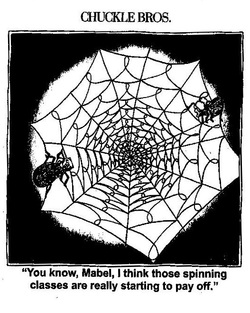|
_ As comical as this above joke is, it really makes me think about spider webs as safety nets. What are the safety nets your facility uses or alternatively, what sort of safety nets do you put in place for yourself?
One of the many roles I have is an AFLCA Trainer of Leaders and I get to observe new AFLCA cycle designation candidates. Recently while observing a new instructor, she demonstrated great care and diligence. She had all participants complete an informed consent and a short medical history to inform her about any health concerns. Smart or what! What waiver does your facility use? Or do you have participants sign a waiver or what about informed consent? And then there are the physical activity readiness questionnaires, where do they fit in? Let’s review what each type of form will provide. Waiver: provide coverage for the facility and associated staff in case of an incident Informed Consent: form outlining the potential risks and benefits to participating in an exercise program PAR-Q: simple screening tool used for participants 15 to 69 years to determine if it is appropriate to start an exercise program PAR-MEDX: medical clearance form that must be provided to participants who answer questions positively on the PAR-Q. This form is completed by the participant’s physician. PAR-MEDX for pregnancy: medical clearance form that must be completed by all pregnant women by their physician before participating in exercise program These forms are all examples of safety nets. Ideally, having one or more of the forms completed by participants will demonstrate that you value your participants’ health and safety. As well, in some cases it may also protect you in an event of an incident. What other communications tools can you use to keep your participants safe? Do you ever ask who is a new participant at the beginning of class or inquire with participants about anyone have any medical conditions you should be aware of? These types of questions can provide some valuable verbal information about who is participating in your class and better enabling you to provide an appropriate class (i.e., suitable intensity, drill types, etc.). It is just another way to avoid having any incidents during your class. In the past couple years, “safety nets” have become more common such that U of A Campus Recreation program has now implemented waivers for all participants who partake in group fitness classes. Take a look at their form for an example. What are the ways you protect your participants and yourself in your indoor cycling classes? What is your “spider web”?
0 Comments
Leave a Reply. |
Workman's Cycle Drills & Skills
Enjoy some of my favorite cycle workout drills either in a cycle class or on your own bike at home! Archives
September 2013
Categories
All
|
Edmonton, Alberta

 RSS Feed
RSS Feed